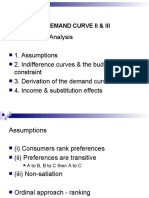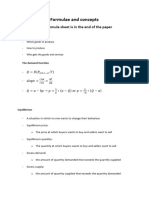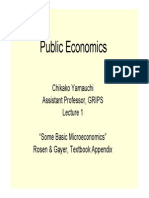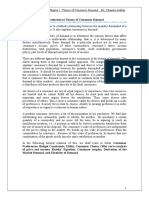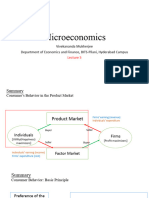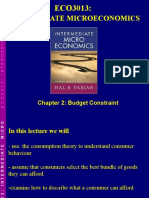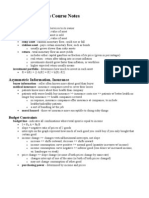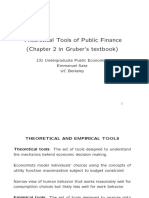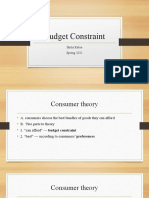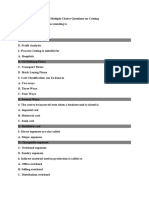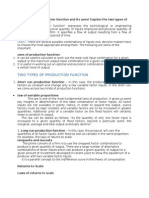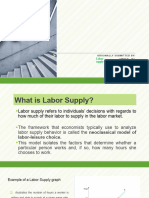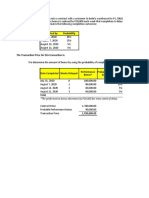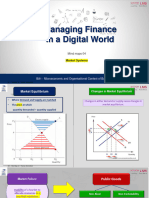0% found this document useful (0 votes)
80 views7 pagesModule 1 Advanced Microeconomics
The document discusses key concepts in microeconomics including:
1. The market is modeled using exogenous and endogenous variables. Exogenous variables exist outside the model while endogenous variables are determined by the model.
2. People optimize based on their budget constraints, choosing the best consumption given prices and income. Equilibrium occurs when supply and demand are equal.
3. In the short run, supply of apartments is fixed so the supply curve is represented as a straight line. Equilibrium in a competitive market is found at the intersection of supply and demand.
4. A discriminating or ordinary monopolist would distribute apartments differently than a competitive market.
Uploaded by
George Rye VelascoCopyright
© © All Rights Reserved
We take content rights seriously. If you suspect this is your content, claim it here.
Available Formats
Download as DOCX, PDF, TXT or read online on Scribd
0% found this document useful (0 votes)
80 views7 pagesModule 1 Advanced Microeconomics
The document discusses key concepts in microeconomics including:
1. The market is modeled using exogenous and endogenous variables. Exogenous variables exist outside the model while endogenous variables are determined by the model.
2. People optimize based on their budget constraints, choosing the best consumption given prices and income. Equilibrium occurs when supply and demand are equal.
3. In the short run, supply of apartments is fixed so the supply curve is represented as a straight line. Equilibrium in a competitive market is found at the intersection of supply and demand.
4. A discriminating or ordinary monopolist would distribute apartments differently than a competitive market.
Uploaded by
George Rye VelascoCopyright
© © All Rights Reserved
We take content rights seriously. If you suspect this is your content, claim it here.
Available Formats
Download as DOCX, PDF, TXT or read online on Scribd
/ 7

















